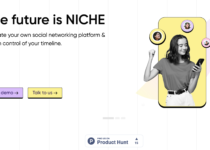Why Traditional SEO is Failing in 2025 and What You Should Do Instead
The digital marketing landscape is undergoing a seismic shift. Gone are the days when ranking on Google guaranteed a flood of leads. Today, AI-powered search engines and platforms like YouTube are changing the game. Businesses that stick to old SEO strategies are being left behind. Here’s what’s changing — and how to adapt.
The Death Knell for Traditional SEO
Google’s search results now prioritize AI-generated answers, YouTube videos, Reddit threads, and ads over organic website links. Even top-ranked pages are buried beneath layers of content, pushing your hard-earned rankings to page two or worse.
A consulting firm that used to get 80% of its leads from Google saw a 60% drop in traffic. This happened as AI answers and videos took over the search results. This isn’t an anomaly — it’s the new reality.
Generative Engine Optimization (GEO): The New Frontier
AI tools like Perplexity and ChatGPT are replacing traditional search. Instead of links, users get direct recommendations (e.g., “Here are the top 3 pool builders in Austin”). To stay visible, businesses must optimize for Generative Engine Optimization (GEO).
5 GEO Strategies to Master in 2025
1. Clarity Over Jargon
– AI scans for specificity. Ditch vague claims like “optimizing efficiency” and state exactly who you help and how.
– Example: A marketing agency rebranded its homepage to: “We help small law firms save 10+ hours/week by automating client intake.” Result? AI visibility skyrocketed.
2. Build a Digital Reputation
– AI evaluates mentions across trustworthy sites. Get cited in industry blogs, news outlets, and review platforms.
3. AI-Optimized Press Releases
– Turn case studies into press releases using tools like Claude. Highlight results, not fluff. Distribute via services like BrandFeatures to earn backlinks and mentions.
4. The Controversial Listicle Hack
– Publish a blog post titled “Top 10 [Your Industry] Services in 2025” — with your business at1. While AI may soon flag self-promotion, this works today to boost recommendations.
5. Detailed Reviews = AI Fuel
– Ask clients for reviews that highlight specific outcomes (e.g., “This software cut our onboarding time by 50%”). AI uses these to justify recommending you.
YouTube: The Unstoppable Search Giant
YouTube isn’t just for cat videos anymore. It’s now the go-to platform for users seeking expertise, not just answers.
Why It Works:
· YouTube’s algorithm prioritizes helpful content, not ads.
· Viewers who watch 3+ of your videos become warm leads — they trust you before they even contact you.
YouTube Content That Converts
1. Answer FAQs: Turn client questions into video titles (e.g., “How Much Should I Charge for Web Design in 2025?”).
2. Step-by-Step Tutorials: Share processes only you can explain (e.g., “How to Start Investing in Your 30s”).
3. Optimize for Search: Use exact search phrases in titles/descriptions (e.g., “In this video, I’ll show you how to start investing”).
4. AI Can’t Replace This: While AI summarizes videos, users craving depth will always choose human expertise.
What About Local SEO?
Local search isn’t dead, but it’s evolving. Dominating map listings requires a hybrid approach blending GEO and hyperlocal tactics. (Stay tuned for my next article on this — subscribe to get it first.)
Adapt or Get Left Behind
The businesses thriving in 2025 aren’t fighting for keyword rankings — they’re building reputations AI can’t ignore and creating video content that positions them as authorities.
Your Action Plan:
1. Audit your website for clarity. Could AI instantly understand what you do?
2. Launch a YouTube channel focused on answering client questions.
3. Start collecting detailed, outcome-driven reviews.
The future of search is here. Will you adapt or disappear?


